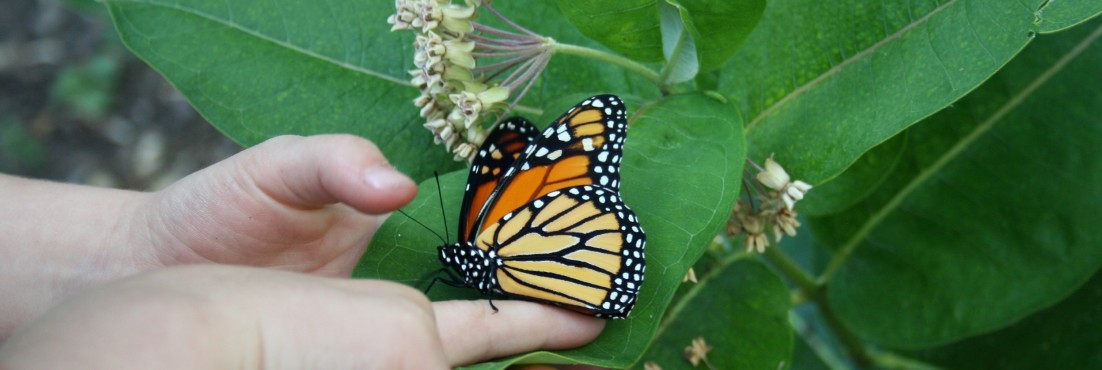I managed to read two gardening-related books this summer (and a healthy dose of fiction, don’t worry).
 How to Move Like a Gardener: Planting and Preparing Medicines from Plants
How to Move Like a Gardener: Planting and Preparing Medicines from Plants
by Deb Soule of Avena Botanicals
I first heard of this book through SouleMama, a parenting/gardening/homesteading blog I’ve been reading for several years. The author of that blog is a fan of Avena Botanicals products, and one thing that this book is very successful at is making me want to try one of their tinctures, teas, or lotions.
However, I am more interested in making medicines from plants myself, and this book fell a little short for me. The title was a little misleading for me; most of the book is a vivid, interesting description of how the Avena Botanicals farm is run and their philosophy of agriculture, spirituality, and even tools. They follow biodynamic agriculture principles, and this was my first introduction to it.
Biodynamic agriculture goes far beyond organic. For example, one of the “biodynamic preparations” that Soule describes involves packing a cow’s horn with manure, burying it for several months, unearthing it, then stirring the now-composted manure into fresh rainwater for an entire hour, then spraying it on crops. All these things must be done at specific times of day AND specific times of year. There are several other biodynamic preparations described in much greater detail in the book.
Honestly, I don’t think that this or strategies like moon-cycle planting are whack, I’ve just never personally tried them. Maybe I ought to. At the very least, by combining meditation with farming, Soule is able to achieve a level of harmony and inner peace with her land and her work on it that must make it a very special place indeed.
The last third of the book is devoted to descriptions of medicinal plants, with advice about cultivating and collecting for each, as well as indications, preparation and dosage. I wished the “preparation” part would have been a bit more detailed—I wanted recipes for tinctures, lotions and the like. She uses many herbs I had never previously heard of, such as gotu kola, ashwaganda, and schisandra, while also providing detail on more common plants such as lavender, rosemary, dandelion and nettle.
A few North American native plants are represented, including Solomon’s Seal and Echinacea.
Beyond excessive wintertime herbal tea drinking, I don’t know how far down the herbal medicine route I’m going to go, but I find it all fascinating. This book was not exactly what I thought it would be, but it was interesting, and a good reminder to me of the importance of intimately knowing your piece of land and all its microclimates—and how valuable that knowledge can be.
 The Secrets of Wildflowers
The Secrets of Wildflowers
A Delightful Feast of Little-Known Facts, Folklore, and History
by Jack Sanders
I bought this book at the 2013 Wild Ones conference in February after paging through my neighbor’s copy. Unlike Soule, Sanders almost exclusively covers North American native wildflowers, including a handful of non-natives that have spread so excessively through our continent that they are here to stay; for example, Coltsfoot, Dandelion, Bindweed, and Chicory.
Each plant is given what can only be described as a short story, comprised of a great variety of details including botanical descriptions, historical medicinal uses, names and naming controversies, modern medicinal uses, and poems.
I found this book entertaining because so many of the plants I’ve recently added to my landscape are included, such as monardas, St. Johnsworts, asclepias (millkweeds), wild geraniums, celandine poppies, and wild columbine. It also made me very curious about some plants that I’ve never seen but will now seek out in the woods, including may apples, jewelweed and indian pipes. After reading this book, I identified a handful of plants while hiking, including jack-in-the-pulpits and baneberries.
The writing is entertaining and accessible, if you have interest in native plants. I enjoyed it, and will be picking it back up as I choose new landscape plants for next year. Reading a story about each plant is so much more memorable and interesting than simply scanning a table of characteristics.
The other day, we were on a hike and Rowan picked up some seeds off the ground. “What plant did these come from, mom?” I had to admit I didn’t know. Then Anneke piped up. “Those are totally from a basswood tree. See? There it is!” My kids have a much more highly-developed sense of place than I did at their age. I spent time on the edges of cornfields and cow pastures, but I never learned the names of plants or observed at the level that my kids do. Learning about where I live—the plants, animals, and insects that are native to my corner of the earth—enriches my life in so many ways beyond merely gardening.
One of my favorite blogs lately has been Ben Hewitt’s account of his family’s very successful homesteading adventure. Recently, he said:
Stop thinking of yourself as a steward of the land. That’s the same old, tired story of humans over nature.
Instead, think of the land as the steward of you. And treat it with the respect your caregiver deserves, dammit.
Just think about that. Isn’t it wonderful?
